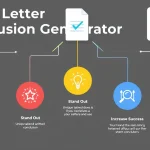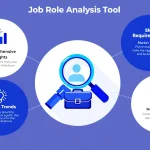Phishing Attack Response Training Scenario Generator
Is this tool helpful?
How to Use the Phishing Attack Scenario Generator Effectively
Follow these steps to create customized phishing attack training scenarios that enhance your employees’ awareness and response skills:
- Define Training Objectives: Clearly state the goals you want to achieve with your phishing training session. For example:
- “Strengthen employees’ ability to detect spear-phishing emails targeting company confidential data.”
- “Improve incident response times during phishing attempts that involve credential harvesting.”
- List Key Learning Points: Outline the critical takeaways for participants. Use specific points such as:
- “Recognizing spoofed sender addresses and malicious attachments.”
- “Steps to report suspicious emails internally and prevent data leaks.”
- Specify Employee Role (Optional): Personalize the scenario by targeting specific job functions. For instance:
- “Customer Support Representative”
- “Procurement Officer”
- Provide Company Context (Optional): Add realism by describing the business environment. Examples include:
- “A financial services firm processing sensitive client portfolios.”
- “A startup specializing in cloud-based software solutions with remote teams.”
- Generate Scenario: Click the button to create a phishing attack simulation tailored to your inputs.
- Review and Copy: Examine the generated scenario. Use the copy option to share scenarios in your training sessions.
Providing detailed information in each field results in a more realistic, relevant scenario that improves training outcomes.
Phishing Attack Scenario Generator: Purpose, Definition, and Benefits
The Phishing Attack Scenario Generator is a practical tool designed to produce customized phishing simulations for employee cybersecurity training. It helps you quickly create realistic phishing scenarios that match your company’s needs, allowing your workforce to develop practical skills to identify and react to phishing threats effectively.
This tool benefits organizations by streamlining scenario creation, increasing training engagement, and targeting vulnerabilities relevant to each role and business context. It supports ongoing cybersecurity education with adaptable simulations that evolve with emerging phishing tactics.
Key Benefits of the Phishing Attack Scenario Generator
- Realistic Training Scenarios: Scenarios reflect your organizational environment, increasing engagement and retention.
- Role-Based Customization: Tailor scenarios for different job functions, addressing specific phishing risks.
- Efficient Scenario Creation: Save time by generating scenarios instantly, allowing frequent and diverse training sessions.
- Consistent Quality: Maintain uniform training standards with reliable, well-structured scenarios.
- Up-to-Date Threat Simulation: Adapt scenarios to emerging phishing methods to keep training relevant.
- Measurable Training Goals: Align scenarios with defined objectives and learning points to track effectiveness.
Practical Applications of the Phishing Attack Scenario Generator
This tool supports a wide range of cybersecurity training needs across various organizational settings:
1. New Employee Cybersecurity Onboarding
Create a series of beginner-friendly scenarios that gradually build phishing recognition skills for new hires.
Sample Scenario: A junior sales associate gets an email requesting access to client lists with suspicious urgency. This tests the ability to identify urgency and legitimacy cues.
2. Department-Specific Training
Develop targeted scenarios for different teams, focusing on phishing threats common to their functions.
Sample Scenario: The HR department receives a phishing email impersonating a payroll vendor asking for confidential employee information, testing verification practices.
3. Keeping Up with Evolving Phishing Tactics
Generate fresh scenarios that reflect current threat trends and real-world phishing campaigns.
Sample Scenario: Employees receive a phishing email pretending to be a government tax agency with fake deadlines, testing response to urgency and authenticity.
4. Incident Response Testing
Simulate phishing incidents to evaluate your organization’s coordinated response across IT, legal, and communications.
Sample Scenario: A phishing attack causes a data compromise, triggering containment and notification procedures involving multiple teams.
5. Executive-Level Training
Create advanced, targeted scenarios to strengthen senior leaders’ defense against sophisticated phishing.
Sample Scenario: Executives receive spear-phishing emails disguised as confidential board memos, testing discernment and verification skills.
Frequently Asked Questions About the Phishing Attack Scenario Generator
Q1: How often should I generate new phishing scenarios for training?
Generate new scenarios at least every quarter to maintain relevance. Increase frequency when new phishing techniques or business changes occur.
Q2: Can the tool create scenarios in languages other than English?
Currently, the generator produces English scenarios. Multi-language support may be added in future updates.
Q3: How do I ensure generated scenarios suit my company culture?
Provide detailed context about your organization in the company context field. Review and adjust inputs to align scenarios with your culture and communication style.
Q4: Can I use the generated scenarios for real phishing simulations?
Yes, but review and adapt scenarios to comply with your organization’s policies and regulations governing simulated phishing tests.
Q5: How can I measure the effectiveness of training using these scenarios?
Define clear training objectives and key learning points. Use assessments and feedback to track if employees correctly identify phishing attempts and follow procedures.
Important Disclaimer
The calculations, results, and content provided by our tools are not guaranteed to be accurate, complete, or reliable. Users are responsible for verifying and interpreting the results. Our content and tools may contain errors, biases, or inconsistencies. Do not enter personal data, sensitive information, or personally identifiable information in our web forms or tools. Such data entry violates our terms of service and may result in unauthorized disclosure to third parties. We reserve the right to save inputs and outputs from our tools for the purposes of error debugging, bias identification, and performance improvement. External companies providing AI models used in our tools may also save and process data in accordance with their own policies. By using our tools, you consent to this data collection and processing. We reserve the right to limit the usage of our tools based on current usability factors.







